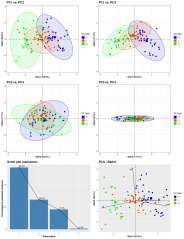(Unless otherwise stated, the copyright of the materials included belong to Jan Woreczko & Wadi.)
Szablon:Woźniak (2019, MaPS)
Z Wiki.Meteoritica.pl
m (→Ilustracje) |
m |
||
| Linia 8: | Linia 8: | ||
(Chondryty zwyczajne typu H (<font color="#0000CC">■</font>), L (<font color="#FF0000">♦</font>), LL (<font color="#00FF00">●</font>). Wykresy sporządzony w pakiecie statystycznym R) | (Chondryty zwyczajne typu H (<font color="#0000CC">■</font>), L (<font color="#FF0000">♦</font>), LL (<font color="#00FF00">●</font>). Wykresy sporządzony w pakiecie statystycznym R) | ||
| - | <gallery caption="" widths=" | + | <gallery caption="" widths="240px" heights="240px" perrow="3"> |
File:4M-BASE_2D_met-ol-names.png|Oliwin ''vs.'' metal (4M-BASE-vmax) | File:4M-BASE_2D_met-ol-names.png|Oliwin ''vs.'' metal (4M-BASE-vmax) | ||
File:4M-BASE_2D_met-pyr-names.png|Piroksen ''vs.'' metal (4M-BASE-vmax) | File:4M-BASE_2D_met-pyr-names.png|Piroksen ''vs.'' metal (4M-BASE-vmax) | ||
Aktualna wersja na dzień 19:14, 22 gru 2024
Woźniak Marek, Gałązka‐Friedman Jolanta, Duda Przemysław, Jakubowska Martyna, Rzepecka Patrycja, Karwowski Łukasz, (2019), Application of Mössbauer spectroscopy, multidimensional discriminant analysis, and Mahalanobis distance for classification of equilibrated ordinary chondrites, Meteoritics & Planetary Science, vol. 54(8), 2019, s. 1828-1839 (abstrakt).[1] Plik doi.
Ilustracje
Więcej → woreczko.pl – Metoda 4M – 4M-BASE-v2n, 4M-BASE-vmax.
(Chondryty zwyczajne typu H (■), L (♦), LL (●). Wykresy sporządzony w pakiecie statystycznym R)
Wykresy box and whisker - wykresy pudełkowe i wąsy podsumowują rozkład danego parametru; pokazują ramkę dla 1 i 3 kwartyla, linię w ramce (?!) dla 50. centyla (medianę) i kropkę dla średniej. Wąsy pokazują 1,5 × wysokość prostokąta (zwanego przedziałem między kwartylami, interquartile range, IQR), co wskazuje oczekiwany zakres danych, a wszelkie dane poza tymi wąsami są uznawane za wartości odstające i oznaczone kropką |
||
Przypisy
Linki zewnętrzne
- woreczko.pl – Metoda 4M (4M method). Zastosowanie spektroskopii Mössbauera, wielowymiarowej analizy dyskryminacyjnej i odległości Mahalanobisa do klasyfikacji zrównoważonych chondrytów zwyczajnych (Application of Mössbauer spectroscopy, multidimensional discriminant analysis, and Mahalanobis distance for classification of equilibrated ordinary chondrites)
- Wikipedia – Analiza głównych składowych ● Analiza skupień ● Diagram Woronoja
- Wikipedia (EN) – Ternary plot








